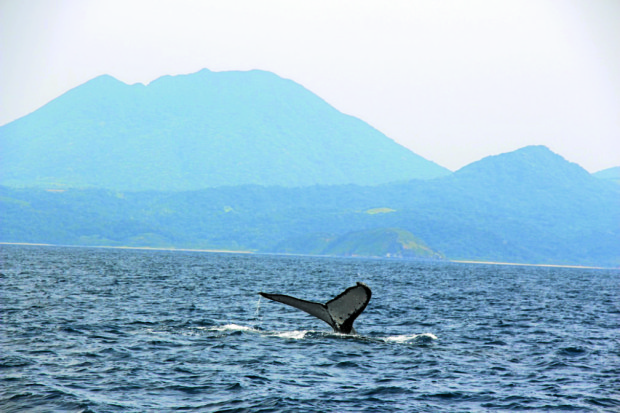Humpbacks lure whale watchers to Babuyan
A distant splash breaks the flat gold sheen of the ocean off the Babuyan island group.
“One o’clock, three kilometers,” Jo Marie Acebes yells. The captain of her outrigger changes course.
The chase is on for a photo shoot of humpback whales of the North Pacific in their southernmost breeding ground. Annually, these creatures—each the length of a basketball court and weighing 22,000 to 36,000 kilograms—migrate from the Arctic to these balmy Babuyan waters to mate and breed.
This also makes the remote islands stage to one of the world’s least understood underwater symphonies. Humpback whales purr, moan and squeak in repeated sequences better known as “whalesong.”
The behemoths reserve these recitals for their breeding grounds—off Hawaii and Okinawa and the waters between the Philippines and Taiwan.
Article continues after this advertisementOnly males sing. At first, it was assumed that the songs were for attracting females. This theory was disputed when it was noticed that males only “sing” to other males.
Article continues after this advertisementAcebes, director of the research nonprofit Balyena, has studied the seasonal whale migration since 1999, when a local resort owner alerted the World Wildlife Fund (WWF) to the event.
She has since regularly visited the area to catch the peak of the mating season (March through May). After receiving a doctoral degree from Murdoch University in Australia in 2007, Acebes moved from WWF to Balyena.
The Philippine seas are home to half the known whale species and to date, most of that diversity has been documented around the Visayas. Dolphins of South Negros and whale sharks off Cebu province are the most famous instances.
Unique creatures
But there are a number of unique creatures whose behavior have not been studied extensively by scientists.
For example, the Tañon Strait between Cebu and Negros islands has a large population of dwarf sperm whales who squirt ink when pursued. In the Babuyan waters, false killer whales, pilot and melonhead whales are frequently sighted near humpback pods.
So far, Acebes has identified 240 unique individual humpback whales in the Babuyan area. Eleven have been matched to whales spotted off Okinawa; another 28 have been spotted wintering off Russia’s eastern Siberian peninsula of Kamchatka.
Though the distances between these habitats are vast, the process of divining the populations’ links is relatively simple.
Each individual humpback whale’s tail and dorsal fin is unique like a human’s fingerprints. Acebes and her team of five volunteers spend eight hours a day spotting whales, and getting close enough to get a clear picture of their tails.
Photos are then matched against multiple albums of whale tail photos to determine if the whale in question has visited the Babuyan waters before or been photographed by researchers in other breeding or feeding grounds.
Acebes and scientists in Japan have found one instance where a whale commuted from the Babuyans to the coast of Japan and back in the space of a month. They also have matched another individual to Alaskan waters.
Doc Jom, as islanders call her, records whale songs using underwater microphones.
“We have found that songs here are similar to the songs recorded in Hawaii and Japan, which means that the whales are mixing and learning from one another,” she said.
Genetic data
Acebes is also gathering genetic data with a crossbow to collect biopsies (flesh plugs). “It’s difficult, you need to be 50 meters from the whale,” she said.
Acebes laments there is so much more research to be done on one of the world’s least studied humpback whale populations. In part, Balyena’s is stymied with a meager P460,000 budget (“in a good year”). Also, the currents near the Babuyans are swift and waters often murky—tough for underwater observations.
So rich are the waters of the Luzon Strait that in 2014, the local fishermen’s association asked for help in setting up a marine protected area.
Poaching from Taiwanese vessels is the biggest problem, according to the Bureau of Fisheries and Aquatic Resources.
Dynamite fishing by local fishermen and the use of hand-operated beach trawlers are also troubling.
“Based on what I know from other sites, like Hawaii, mothers who have given birth or are just about to give birth prefer calmer areas like a cove or a bay to stay over rough waters,” said Acebes. Local fishermen are now using motorboats, which is worrisome.
“For humpbacks, any disturbance in the environment is significant. They are very sensitive to sound,” she said.
(Editor’s Note: Melati Kaye is a science writer based in Southeast Asia. Reporting for this story was supported by an Internews Environmental Journalism Network grant.)
